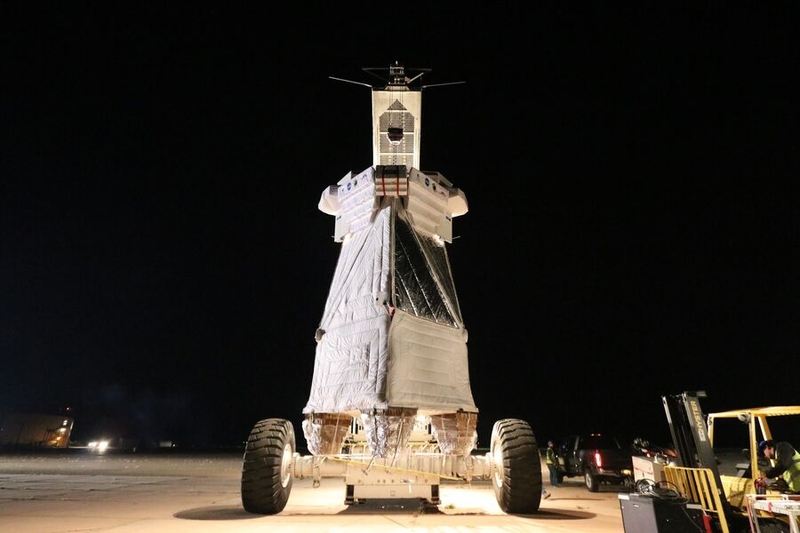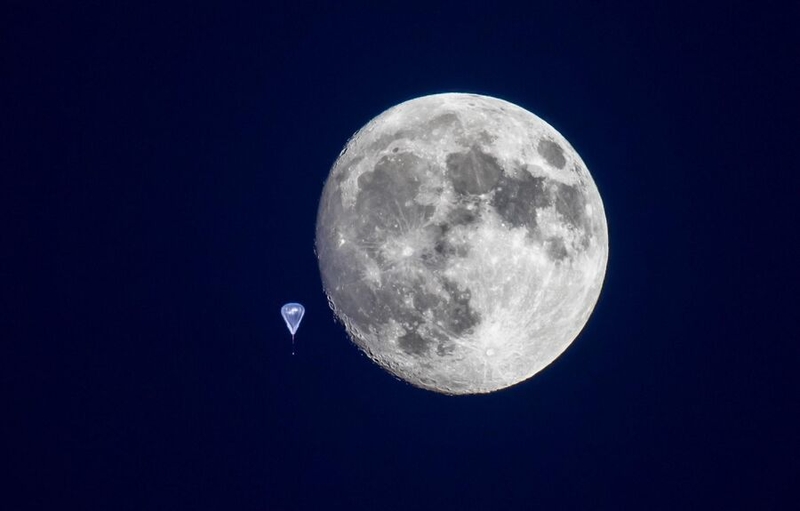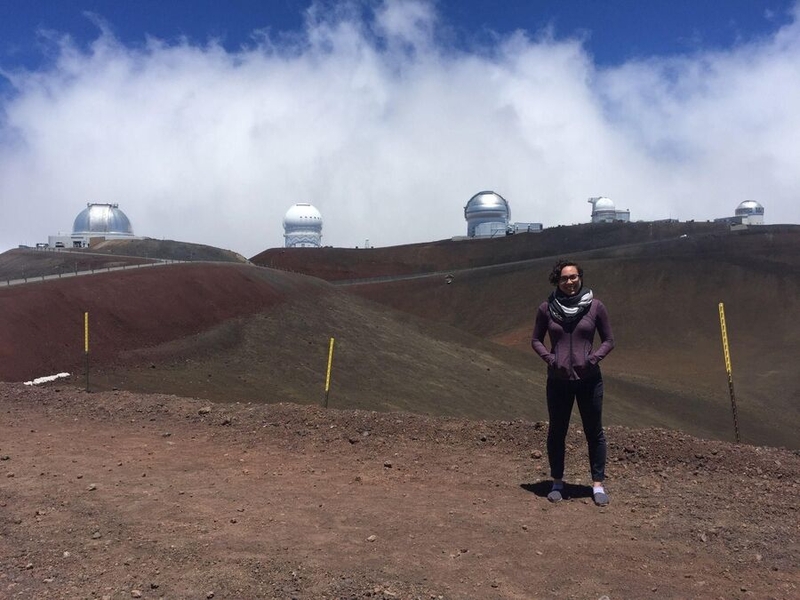The people who use our boards.
383 interviews since 2018
The people who use our boards.
Erika Hamden
Astronomy Professor, University of ArizonaWho are you, and what do you do? What do you like to do outside of work?
I’m Erika, an astronomy professor at the University of Arizona and a telescope builder! I have been really into space since I was a kid and am now basically living the dream with a job that I really love. I design and build telescopes, mostly in the ultraviolet and mostly for spectroscopy (so breaking up the light into a spectrum to figure out things like composition and motion). I also do some technology development—working to make UV detectors and gratings better. I have a lab at the university with vacuum and optical systems designed for testing sensors and other UV hardware. Before taking my present job at the UofA, I was a postdoc at Caltech.
I have three projects that take up most of my work time: a UV spectrograph called FIREBall that flies on a high-altitude balloon and looks at distant galaxies (you can listen to my TED talk about building this telescope); a small satellite telescope named Aspera, also a spectrograph, looking at the environments of nearby galaxies; and a mission still in the proposal/development stage named Hyperion, which is a space-based telescope that will observe star-forming regions in our own galaxy. I do a variety of tasks for each of these—some technical (like designing or fabricating parts, installing things), some are more managerial (I have a group of several grad students, undergraduates, postdocs, and technical staff whose work I oversee), and some more development/writing (like working on the proposals for all of these, writing up papers, organizing science teams, figuring out the data requirements and/or analysis pipelines). It’s really fun because each day is different and challenging.


I also teach classes, usually one per semester. I’ve taught everything from GenEd intro astronomy to graduate level astronomical instrumentation.

Outside of work, I’m really into yoga, cooking, hiking around Tucson, and generally having as good a life as possible. I have a pretty serious yoga practice and recently started lifting weights as a complement. One pose I’ve been working towards is an unsupported handstand, in the middle of a room. It’s been a few years on this path, but I’m slowly getting there.

I’ve also been working on my pilot’s license—Tucson is a great place for flying because the weather is so good all the time. It’s been slow to fit it in with work and all the other stuff, but I’m making progress.

What hardware do you use?
This is a hilarious question for me because most of the hardware I use is telescopes of my own design! I have a lab on campus full of vacuum UV equipment, most of which is from a company called McPherson. Also Thorlabs and McMaster provide really great hardware that I’m always getting at the last minute to fix problems. In addition, we design and build custom hardware for various projects. This could be a cooling system for detectors or scattered light-reducing baffling for our telescopes, or 3D printing components to show guests how things work, for example. Right now, I’m working with my grad students to align and operationalize a UV vacuum monochromator. Basically there is an input UV lamp and the monochromator outputs a single wavelength (thus the name: mono=one, chroma=color). We are developing a setup to measure the efficiency of detectors—i.e. how many photons will it detect out of 100 hitting the surface. We operate the hardware with mostly Python code on a Linux box, typically a flavor of Ubuntu. Some of the hardware systems require software or versions that are pretty archaic, so it can be tricky to update any OS.

For my actual day-to-day computer setup, I have a MacBook Pro. I spend a lot of time writing, e-mailing, and doing less thrilling managerial things, so this works fine for that. I have an LG external monitor, which can switch between different inputs for when I want to use a Windows machine (certain CAD and optics software only operates on Windows), and the keyboard and mouse go through the monitor so I can use them on either machine without having to unplug a bunch of peripherals.
I started using a standing desk in grad school, so it’s been about ten years of standing for me. I like to use just a basic bar table from IKEA (similar to this one) because the adjustable standing desks I’ve had in the past aren’t stable enough for me. I hate any kind of monitor vibration, which can happen sometimes, especially with single-pillar standing desks. With COVID, I took my office setup home, and have been lazy about moving it back into the department. Eventually it’ll get back there. I have also been very lazy about getting a laptop stand—right now it’s a pile of some good books to get the laptop camera to the right height for Zoom meetings. It’s a bit of a throwback to my original standing desk from grad school, which was literally just piles of astronomy textbooks for my keyboard, monitor, and mouse. So the current situation is an improvement over that, anyway.
And what software?
I don’t really think of myself as a programmer, but I do spend a lot of time debugging code to interface with all of our hardware components. It’s mostly random shell scripts or Python code. Back in my graduate school days, I wrote exclusively in IDL, which is an archaic and expensive language used only in astronomy. Not quite as bad as FORTRAN77, but not much better. Now, the limited coding I do is in Python.
For more technical work, I use SolidWorks and Zemax. I have a weird dislike of new apps and/or installing things on my computer, so I use Slack, for example, but only through the web interface. I do a lot of collaborative work on Google Suite.
What’s your keyboard setup like? Do you use a custom layout or custom keycaps?
So I originally got the ZSA Moonlander because a close friend recommended it. In late 2020 I started having some shoulder issues, likely from a combo of working all the time on a tiny laptop keyboard at home and doing a lot of yoga, most of which involves pushing actions which strengthen the front body but not the back body. So I was really hunched and ended up with some bicep tendon pain whenever I did push-ups and sometimes just while I was moving my arm around. I decided to get the ZSA Moonlander to help with my posture while working, so that my shoulders would be back and my arms more open. So it was originally mostly an ergonomics thing. I eventually came to really like the key layout—having the Backspace key on the left above Shift, the thumb keys. They make for a really nice flow. I just kept the regular layout, nothing custom, and it’s been great for me.
What would be your dream setup?
My dream setup is probably to upgrade my standing desk to a larger table so I can have some books and papers open on the table without having to shuffle everything around. As you can see in the image, the current setup just fits the keyboard, laptop, and external monitor, so more space would be really lovely. Plus I’d love to actually get a real laptop stand and/or a webcam so I don’t have to keep my laptop open for Zoom meetings. It’s a pretty achievable dream, to be honest, but my current setup has been “good enough” that I haven’t felt moved to start ordering anything. I’ll probably move my desk back to my on-campus office in the summer and then might get some improvements ordered. My current window view is pretty good, though, so I’ll be sad to leave that behind.





